Background
Rice (Oryza sativa L.) is cultivated on approximately 25,000 acres mainly on organic soils in the Everglades Agricultural Area (EAA) located south of Lake Okeechobee in southern Florida. As a rotational crop with sugarcane (Saccharum spp. hybrids), rice is grown from February to October in the EAA. In addition to serving as a rotational crop that provides income to growers, flooded rice provides other benefits to the agroecosystem including soil improvement and reduction of soil subsidence and soil insect pests (Cherry et al. 1994; Bhadha et al. 2020). Although several species of insects and weeds can be found in and around rice fields in Florida, three species of rice stink bugs (Oebalus spp. [Hemiptera: Pentatomidae]) and fall panicum (Panicum dichotomiflorum Michx.) are considered the most dominant and troublesome insect pest and weed species, respectively.
Sugarcane is Florida’s major field crop cultivated on approximately 382,000 acres (VanWeelden et al. 2020b). Approximately 72% of the sugarcane acreage in Florida is on organic soils in the EAA, and the remainder is on surrounding mineral soils (VanWeelden et al. 2020b). Florida rice fields, being much smaller in acreage than those in other states, are typically surrounded by sugarcane fields. While collecting various insects in sugarcane fields in southern Florida during April 2018, it was observed that rice stink bugs were frequently seen in association with graminaceous weed species (plants of the grass family).
Because Oebalus spp. are well known to feed on various weeds but not on sugarcane, it is important to determine the importance of weeds in maintaining Oebalus populations in Florida sugarcane. This publication provides information to Florida growers about 1) rice stink bugs as important insect pests in rice cultivation, 2) weeds commonly found in sugarcane in close proximity to rice fields, and 3) the important relationship of weeds in sugarcane serving as hosts for rice stink bugs. Growers in the region would particularly benefit from this information because it shows the importance of weed management in mitigating risk from rice stink bugs to sustain profitable rice production.
Rice Stink Bug Complex
Scientific name: Oebalus pugnax (F.), O. ypsilongriseus (DeGeer), and O. insularis (Stal) (Figure 1).
The rice stink bug, Oebalus pugnax (F.) was the dominant species in Florida rice fields comprising >95% of the total stink bug population before the late 1990s (Jones and Cherry 1986). In 1994, a second stink bug species, Oebalus ypsilongriseus (DeGeer), was found infesting Florida rice fields (Cherry et al. 1998). It occurred in 100% of rice fields in surveys conducted in 1995 and 1996 and constituted 10% of all stink bugs collected (Cherry et al. 1998). A third stink bug species, Oebalus insularis (Stal), was first observed in Florida rice fields in 2007 and constituted 20% of all stink bugs collected in a survey conducted in 2008 and 2009 (Cherry and Nuessly 2010). This survey showed that O. insularis, a well-known rice pest in the Caribbean islands, Central America, and South America, is now widespread in Florida rice fields. These were the first reports of O. insularis and O. ypsilongriseus being found in commercial rice fields in the United States. Currently, the rice stink bug complex infesting Florida rice is the most diversified and unique stink bug complex in United States rice production, with all the three Oebalus species.
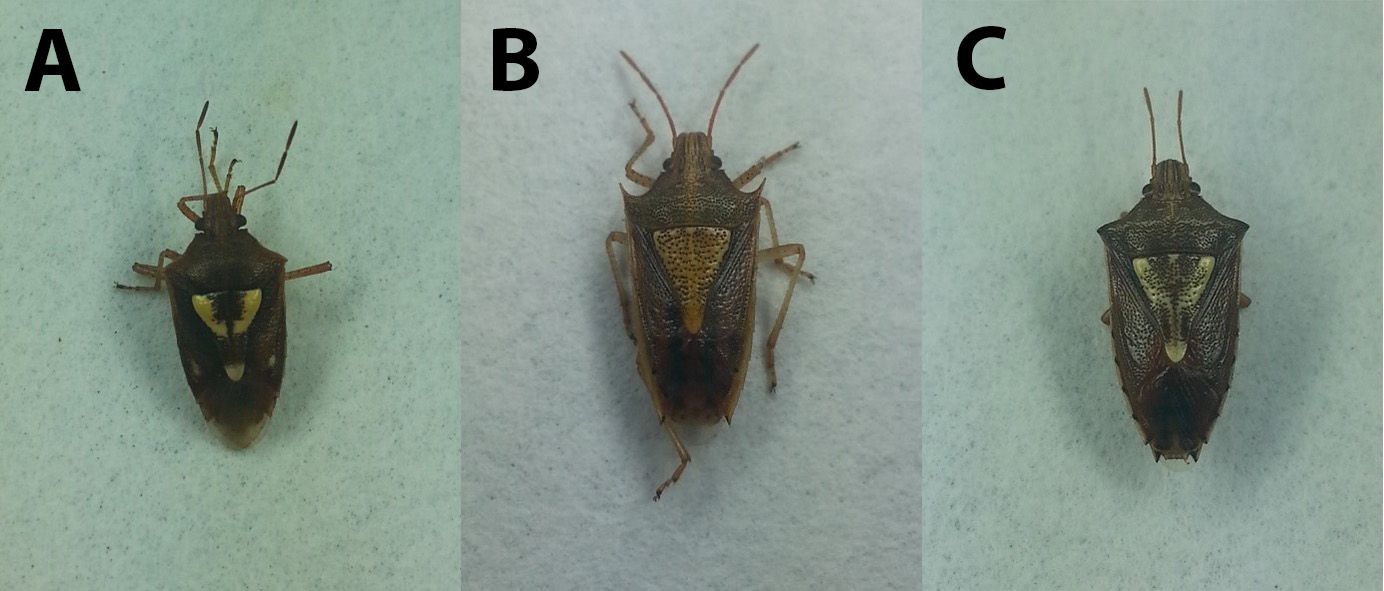
Credit: Ron Cherry and Mike Karounos, UF/IFAS
Weeds in Sugarcane
Several weed species infest sugarcane fields in Florida. According to surveys of sugarcane fields conducted in the EAA in May and June of 2018 and 2019, thirteen weed species from seven plant families were identified within sugarcane fields, including grasses, forbs (broadleaves), and sedges (Table 1). Grasses accounted for most of the weed species surveyed, with fall panicum (Figure 2 and 3) being the most common species. Fall panicum was found in 83% of fields and has a history of being the most prevalent and problematic annual grass weed species associated with Florida sugarcane (Odero et al. 2016). Spiny amaranth (Amaranthus spinosus L.) and yellow nutsedge (Cyperus esculentus L.) were found in 67% of fields.
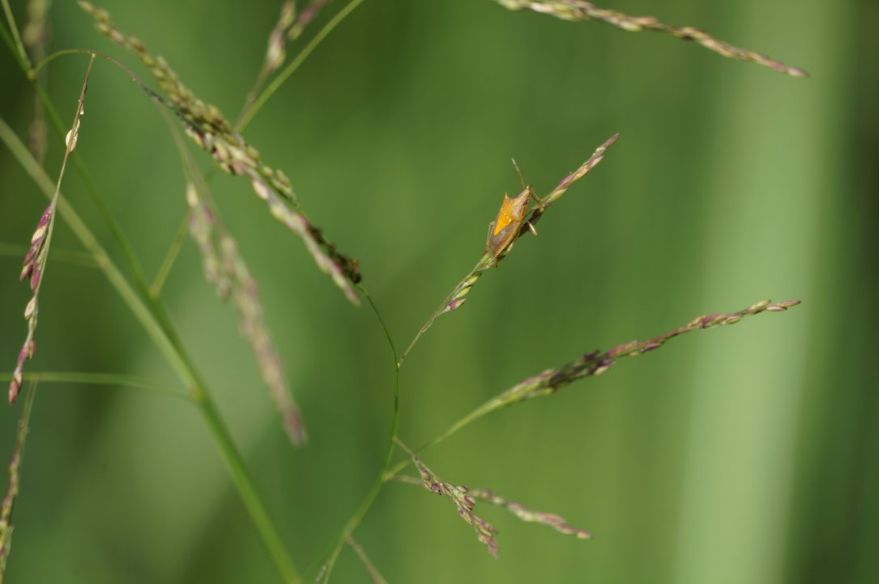
Credit: Calvin Odero, UF/IFAS
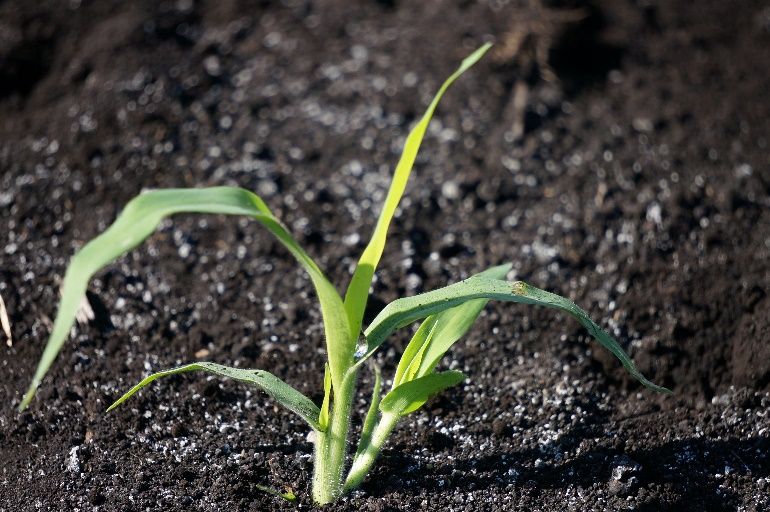
Credit: Calvin Odero, UF/IFAS
Table 1. Weed survey results of sugarcane fields in the Everglades Agricultural Area in southern Florida in 2018 to 2019.
Fall panicum (Figure 2) is extremely important in propagating rice stink bug populations as pests in Florida rice. Other grasses such as coast cockspur (Echinochloa walteri (Pursh) A. Heller) (Figure 4) and southern crabgrass (Digitaria ciliaris (Retz.) Koeler) (Figure 5) can also propagate rice stink bugs in Florida rice. Rice is grown in the EAA typically surrounded by or very close to sugarcane fields. The rice fields become attractive to the stink bugs at heading, starting in late June. The sugarcane canopy closes around this time, creating shade and reducing weed populations. Recently, it was reported that weeds serve as a bridge host for overwintered brown stink bug (Euchistus servus (Say)) populations until they move into subsequent crops (Babu et al. 2019). Likewise, in Florida, fall panicum is an important bridge host in large acreages of sugarcane for the three Oebalus species of rice stink bugs until the adults move into the smaller rice acreage later.
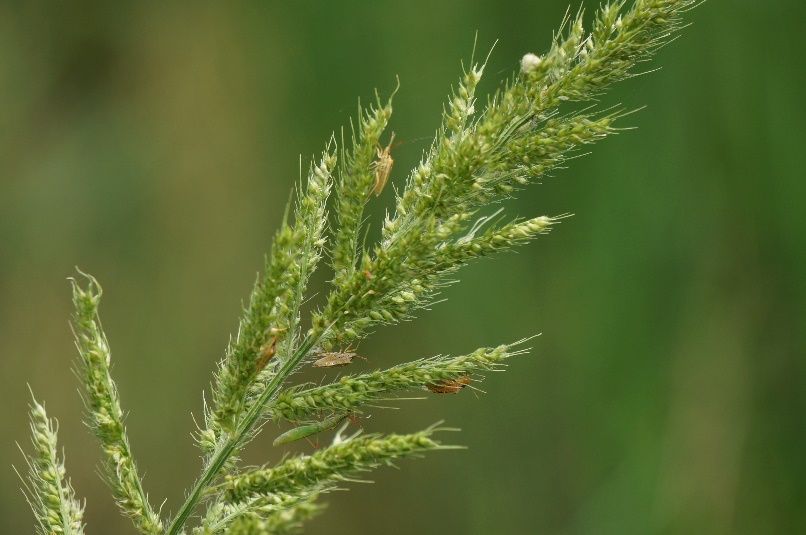
Credit: Calvin Odero, UF/IFAS
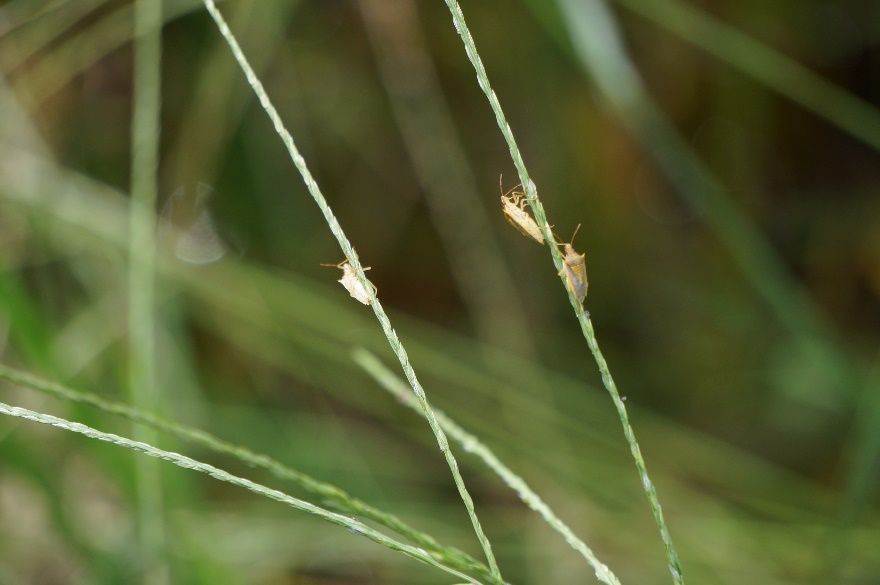
Credit: Calvin Odero, UF/IFAS
In our survey, all three stink bug species were found only on fall panicum in sugarcane fields (Table 2). Adults were 90% of stink bugs found and nymphs were 10%. The presence of nymphs of all three species shows that besides feeding, reproduction also occurred on the weeds, which is not always the case (Figure 6).
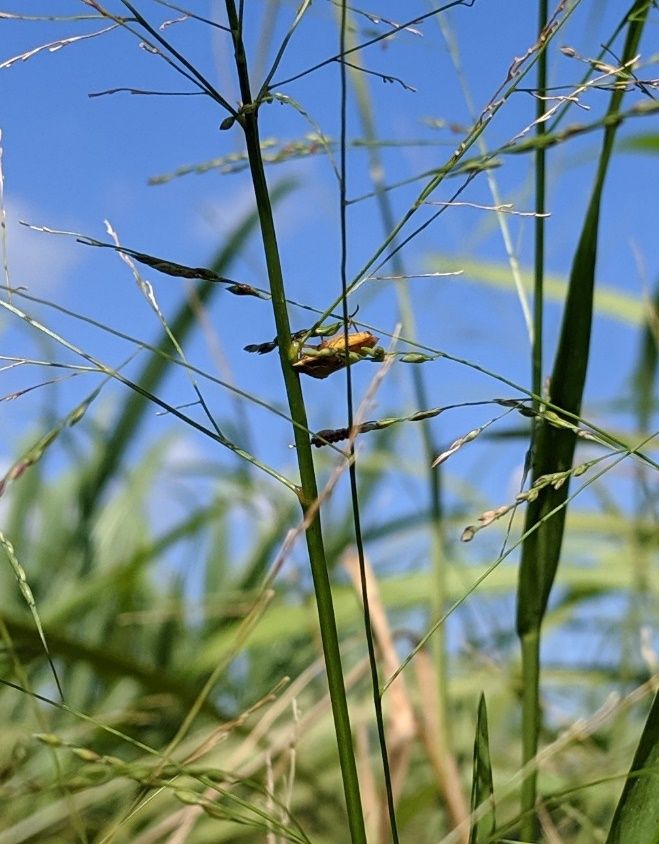
Credit: Michael Karounos, UF/IFAS
Table 2. Three species of rice stink bugs (Oebalus) found in four months in spring and early summer on fall panicum in Florida sugarcane fields in 2018 and 2019.
Abundance of Rice Stink Bugs
The relative abundance of the three Oebalus species in sugarcane fields in May and June was 47%, 43%, and 10% of O. insularis, O. pugnax, and O. ypsilongriseus, respectively. Although few O. ypsilongriseus were found between March and June, this species becomes more abundant later in the rice growing season in Florida (Cherry et al. 1998).
Recently, O. insularis has become the most abundant species, more than doubling and tripling its relative abundance in 2017 and 2018, respectively, in Florida rice compared to surveys conducted in 2008 and 2009 (Cherry and Nuessly 2010, VanWeelden et al. 2020a). We found that O. insularis was the most abundant rice stink bug associated with weeds, particularly fall panicum, showing that this species is growing in importance in Florida rice.
Most scientific information on insect–weed interactions is found on the common rice stink bug, O. pugnax. This species relies on a broad range of grassy host species for feeding and reproduction throughout the year, building up population before migrating to rice (Ogden and Warren 1962). The stink bugs in this 2018 to 2019 report were found only on fall panicum, showing that they have high preference for this weed species. (As noted earlier, fall panicum remains the most prevalent and problematic grass weed reported in Florida sugarcane). This is in addition to the evidence of the strong stink bug (O. pugnax) and fall panicum association in and around rice fields found in other studies (Douglas and Ingram 1942, Cherry and Bennett 2005, VanWeelden et al. 2020a).
Management of Rice Stink Bugs and Weeds
The UF/IFAS publications “Weed Management in Rice” (https://edis.ifas.ufl.edu/publication/WG001) and “Stink Bugs in Florida Rice” (https://edis.ifas.ufl.edu/publication/IN1009) provide valuable information on management of these pests in rice production. Such cultural practices as adjustment of planting dates (stink bugs fly and damage vulnerable rice panicles in March through June), continuous flooding, and management of fall panicum in surrounding sugarcane fields, can mitigate risks posed by weeds and the rice stink bug complex in Florida rice.
References
Babu, A., D. D. Reisig, J. F. Walgenbach, R. W. Heiniger, and W. Everman. 2019. “Influence of Weed Manipulation in Field Borders on Brown Stink Bug (Hemiptera: Pentatomidae) Densities and Damage in Field Corn.” Environmental Entomology 48:444–53.
Bhadha, J. H., A. L. Wright, and G. H. Snyder. 2020. “Everglades Agricultural Area Soil Subsidence and Sustainability.” SL 311. SL 311/SS523, Rev. 3/2020”. EDIS 2020 (2). https://doi.org/10.32473/edis-ss523-2020.
Cherry, R., J. Powell, and M. Ulloa. 1994. “Reduced Soil Insecticide Use in Sugarcane Planted after Rice.” Journal American Society of Sugar Cane Technologists. 14:77.
Cherry, R., D. Jones, and C. Deren. 1998. “Establishment of a New Stink Bug Pest, Oebalus ypsilongriseus (Hemiptera: Pentatomidae) in Florida Rice.” Florida Entomologist. 81:216–220.
Cherry, R., and A. Bennett. 2005. “Effect of Weeds on Rice Stink Bug (Hemiptera: Pentatomidae) Populations in Florida Rice Fields.” Journal of Entomological Science 40:378–84.
Cherry, R., and G. Nuessly. 2010. “Establishment of a New Stink Bug Pest, Oebalus insularis (Hemiptera: Pentatomidae), in Florida Rice.” Florida Entomologist 93:291–293.
Douglas, W. A., and J. W. Ingram. 1942. “Rice-Field Insects.” U.S. Dept. Agric. Circ. 632:1–32.
Jones, D. B., and R. H. Cherry. 1986. "Species Composition and Seasonal Abundance of Stink Bugs (Heteroptera: Pentatomidae) in Southern Florida Rice." Journal of Economic Entomology. 79:1226–1229.
Odero, D. C., M. Duchrow, and N. Havranek. 2016. “Critical Timing of Fall Panicum (Panicum dichotomiflorum) Removal in Sugarcane.” Weed Technology 30:13–20.
Ogden, G. E., and L. O. Warren. 1962. “Rice Stink Bug, Oebalus pugnax F., in Arkansas.” Arkansas Agricultural Experiment Station Report 107:1–23.
VanWeelden, M. T., R. H. Cherry, and M. Karounos. 2020a. “Relative Abundance of the Stink Bug (Hemiptera: Pentatomidae) Complex Infesting Rice in the Everglades Agricultural Area of Florida.” Journal of Economic Entomology 113:1582–1585.
VanWeelden, M., S. Swanson, W. Davidson, M. Baltazar, and R. Rice. 2020b. “Sugarcane Variety Census.” Sugar Journal 83:8–21.